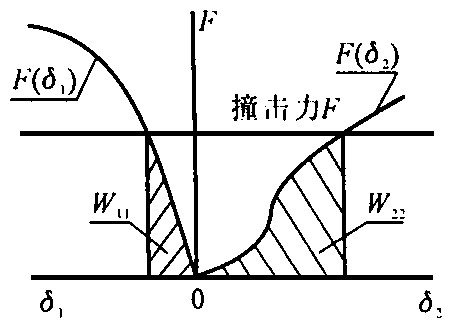Crashworthy Energy Absorbing Car-body Design Method for Passenger Train
Article Text (Baidu Translation)
-
摘要: 为了减轻客运列车碰撞事故造成的损失, 实现被动安全保护, 对组成列车的动车、客车车体结构提出了新的设计方法, 重新分配车体各部分刚度, 设计出具有合适吸能结构的耐冲击车体, 车体结构均按前、中、后三种纵向刚度设置, 前后两部分为可以产生塑性变形的弱刚度吸能结构, 中间部分为仅产生弹性变形的强刚度弹变结构。当列车在正常运行时, 车体有足够的强度和刚度, 需要满足有关规范规定的强度、刚度要求; 在较高速下发生碰撞事故时, 吸能结构能够沿所需方向产生塑性大变形吸收足够冲击动能, 保证机器间和乘客区不发生破坏, 并延缓碰撞作用时间, 降低碰撞瞬间最大减速度, 使撞击减速度在人体承受范围内。Abstract: In order to reduce the losses suffered from collision between passenger trains, a new design method for the car body structure of motor car and trailer is advanced. Car body structures are made up of three parts with diffferent stiffness, by carefully designed. The parts of the front and the end are the weak stiffness structure to absorb energy through plastic deformation in the collision. The middle part, where only elastic deformation occurs, is an elastic deformation structure with strong stiffness. As the passenger train runs normally, car body structure measure up to regulation of intensity and stiffness in the standards. Once collision accident occurred when the train is moving with fairly high speed, the energy absorbing structure produces large plastic deformation along the direction needed to absorb sufficient energy, at the same time, the deceleration must be controlled within the endurable limits to human body.
-
Key words:
- passenger train /
- energy absorbing car body /
- design method
-
表 1 车体等效纵向刚度
名称 车体等效刚度/N·m-1 车体每米等效刚度/N·m-1·m-1 车体钢结构长度/m 说明 准高速单层客车 0.90×108 22.86×108 25.50 200 km/h控制车 0.96×108 22.63×108 23.60 动力集中动车组 200 km/h动力车 0.86×108 22.07×108 25.60 动力分散动车组 SS8型电力机车 2.37×108 39.90×108 16.84 不计顶盖 单层内燃动车组动车 1.72×108 42.07×108 24.40 不计顶盖 耐冲击车体 0.88×108 22.50×108 25.50 注: 若车体每米等效纵向刚度为k1, 车体等效纵向刚度为k, 车体长度为l, 则k=k1/l。 -
[1] 余同希. 结构的耐撞性和能量吸收装置[J]. Mechanics and Practice, 1985, 7(3). https://www.cnki.com.cn/Article/CJFDTOTAL-LXYS198503000.htm [2] 朱厚勤, 郑际嘉. 船舶碰撞的研究方法和进展[J]. 力学进展, 1994, (4): 559-567. https://www.cnki.com.cn/Article/CJFDTOTAL-LXJZ404.011.htm [3] 杨桂通, 熊祝华. 塑性动力学[M]. 北京: 清华大学出版社, 1984. [4] STEFFEN Scharf, HANKO Marek. Kollisionssicherheit von schienenfahrzeugenerfahrungen bei der entwicklung und urprobung kollisionsgerechter fahrzeugstrukturen[J]. Schienenfahrzeuge, 1997, ZEV+ DET Glas, Ann: 121. [5] 华云龙, 余同希. 多胞材料的力学行为[J]. 力学进展, 1991, (4): 457-469. https://www.cnki.com.cn/Article/CJFDTOTAL-LXJZ199104005.htm -





 下载:
下载:



